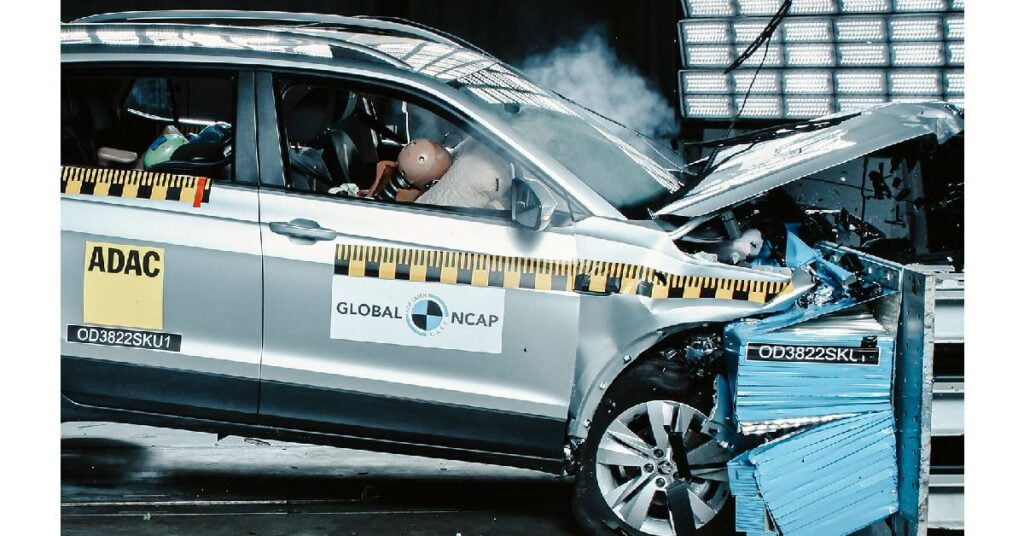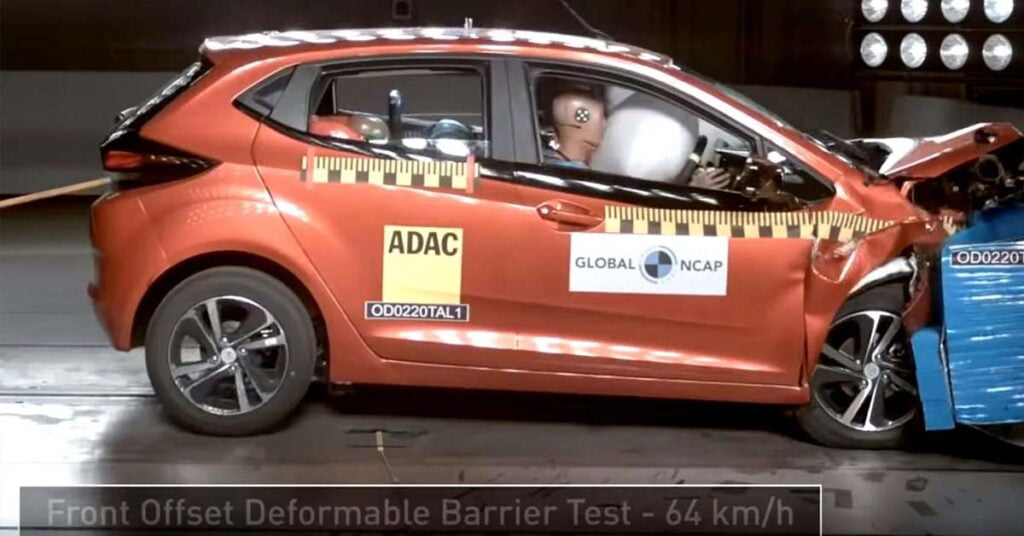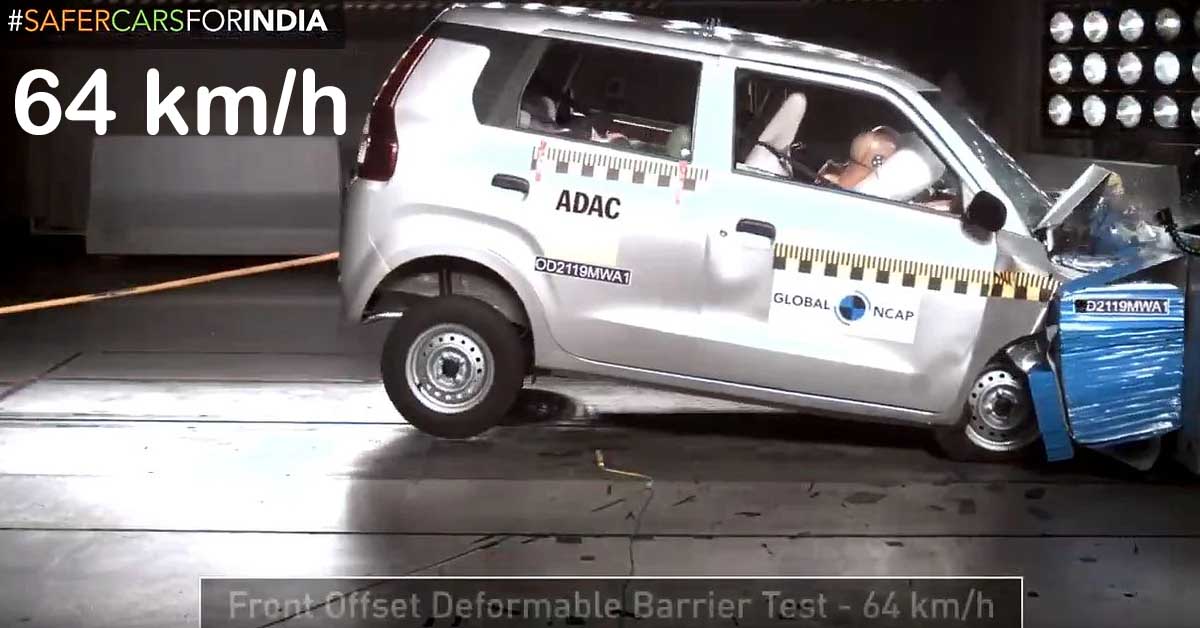With the growing recognition among car buyers regarding the importance of safety ratings in cars, it becomes important to gather information about the process of testing cars under NCAP.
You must’ve had the question of why the NCAP tests are performed at 64 kmph and not at higher speeds. That is exactly what we are here to discuss today. In India, people have started taking NCAP ratings into consideration before buying a car in recent times. Products like Tata Nexon (the first Indian car to score a 5-star rating at GNCAP) are what made the car buyers in our market safety-conscious. Thereafter, we have so many new cars in India that boast a full 5-star safety rating.
You may also like: Mahindra Bolero (GNCAP – NA) Hits Tata Nexon (5-Star), Inflicts Major Damage

You may also like: Skoda Kushaq Crashes at 90 km/h Days After Bagging 5 Stars From NCAP, See Results
Why NCAP Tests Cars at 64 kmph?
It becomes critical to understand the process of testing the build quality of cars. NCAP refers to New Car Assessment Program. There are various types of NCAPs like Euro NCAP, GNCAP (Global NCAP), Latin NCAP, ASEAN NCAP and more. There are a few reasons why cars are tested at 64 kmph.
You may also like: 5 Star Tata Altroz Hits Maruti Eeco (NCAP- NA) – Suffers Much More Damage Here’s
- Firstly, most accidents on the roads take place under 64 kmph. Part of the reason why that is so is that either they occur in city conditions or people decelerate at the time of the collision on the highways and the effective speed is somewhere around that.
- Then, it is only the highways that have a speed limit in excess of 100 kmph. Most city and country roads request you drive around the 60 kmph mark. Hence, it makes sense to test the cars at this very speed only.
- Taking physics into consideration, the GNCAP tests crash the car against an immovable object. However, in daily accidents, there is almost never a case where the car hits an immovable object head-on. If a car hits another car, the impact is absorbed by the crumple zones in both cars reducing the intensity of the sudden jerk considerably. Therefore, it could be thought of as testing the car at a higher speed than 64 kmph.

Indirectly Shows Results of Crash at Higher Speed
- Similarly, most accidents don’t take place head-on as drivers end up steering away from the impact due to their reflexes. Again, a head-on collision at 64 kmph is almost equivalent to a car hitting a stationary object from the side or rear at over 100 kmph. Therefore, the head-on test is indirectly showing the results of a crash at a higher speed.
- If you decide to make cars safe at over 100 kmph, the amount of crumple zone required will make the car as long as a bus. Not to mention, the cost of cars will also rise significantly. Hence, there is always a trade-off that the carmakers have to make to keep the dimension of cars in check as well.
You may also like: BYD Atto 3 Electric SUV Gets 5-Star Rating In Euro NCAP Crash Tests
- Finally, no one is advised to drive at over 120 kmph in most situations. Doing so means that you are inviting trouble intentionally. Crashes at such high speeds are bound to be fatal. We all know that.


